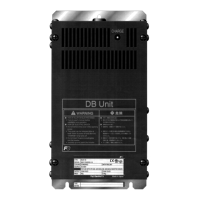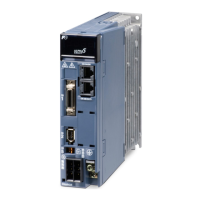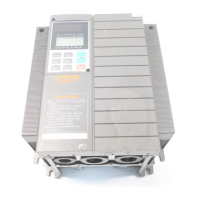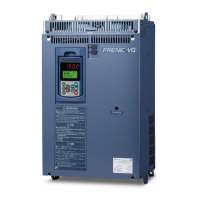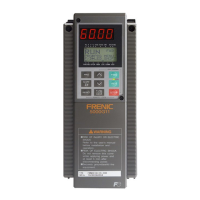5-39
Restart after momentary power failure (Frequency fall rate) (H14)
During restart after a momentary power failure, if the inverter output frequency and the motor
rotation cannot be harmonized with each other, an overcurrent will flow, activating the overcurrent
limiter. If it happens, the inverter reduces the output frequency to match the motor rotation
according to the reduction rate (Frequency fall rate: Hz/s) specified by H14.
Data for H14 Inverter’s action on the frequency fall rate
0.00
Follow the deceleration time specified by F08
0.01 to 100.00 Hz/s
Follow data specified by H14
999
Follow the setting of the PI controller in current limiter
(The PI constant is prefixed inside the inverter.)
If the frequency fall rate is too high, regeneration may take place at the moment the
motor rotation matches the inverter output frequency, causing an overvoltage trip. On
the contrary, if the frequency fall rate is too low, the time required for the output
frequency to match the motor speed (duration of current limiting action) may be
prolonged, triggering the inverter overload prevention control.
F15 and F16 specify the upper and lower limits of the output frequency, respectively.
• When you change the frequency limiter (High) (F15) in order to raise the running
frequency, be sure to change the maximum frequency (F03) accordingly.
• Maintain the following relationship among the data for frequency control:
F15 > F16, F15 > F23, and F15 > F25
F03 > F16
where, F23 is of the starting frequency and F25 is of the stop frequency.
If you specify any wrong data for these function codes, the inverter may not run the
motor at the desired speed, or cannot start it normally.
F15
F16
Frequency Limiter (High)
Frequency Limiter (Low)

